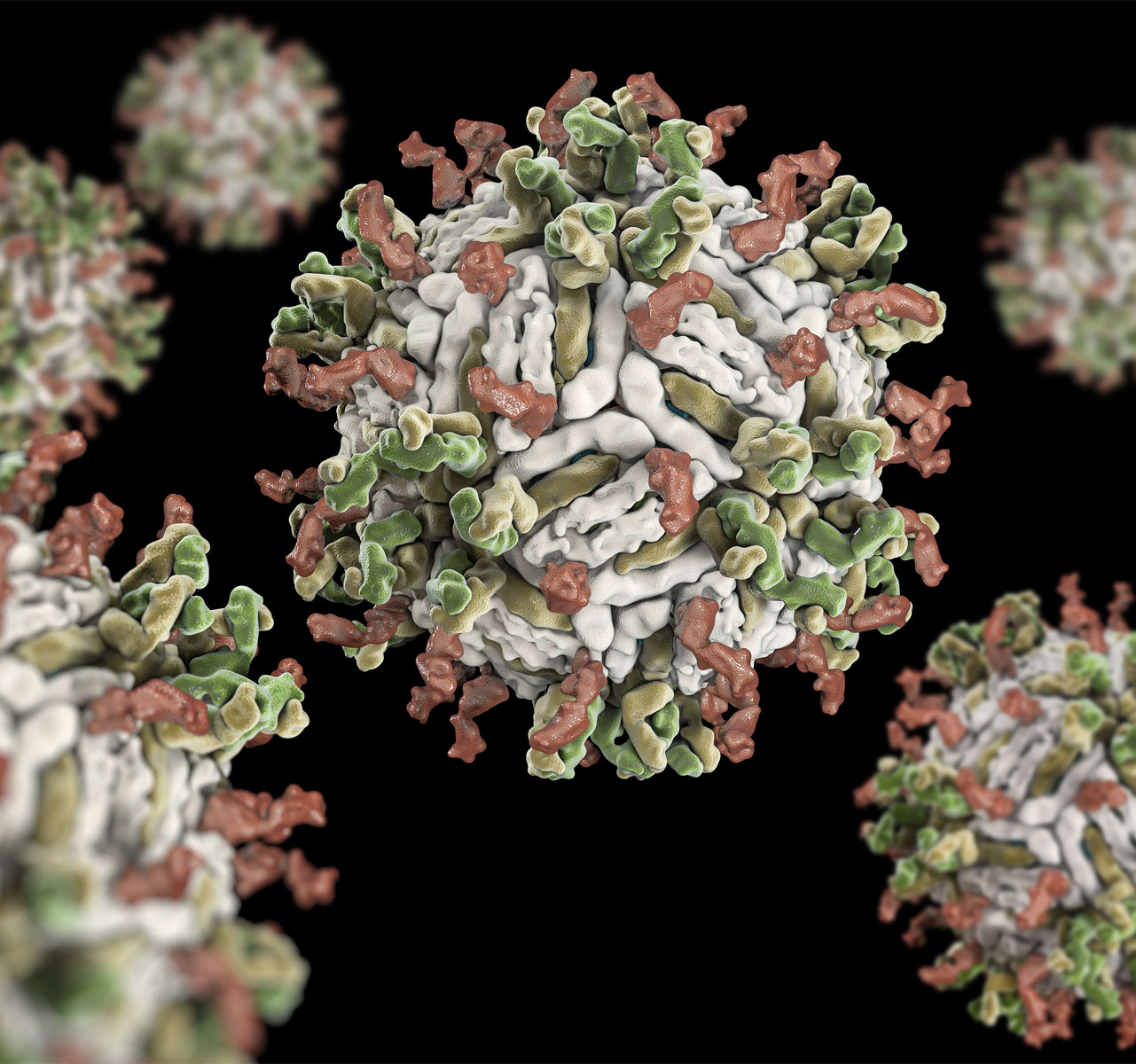Protein Core Facility
BPRC is often a collaborative partner to evaluate new vaccine candidates. Yet, we also design vaccines ourselves. Scientists at BPRC have many years of experience in vaccine development.

COVID vaccine

BPRC is in the process to produce an attenuated virus vaccine against COVID19. Using Transformation Assisted Recombination techniques, hybrid common cold-SARS CoV2 coronaviruses are being constructed, among others with the delta variant of the virus. When available, these will be tested for safety and efficacy as a potential superior vaccine. Moreover, they may serve as research tools to elucidate the mechanisms by which monkeys, and also humans, protect themselves against COVID.
TO TOP ^ < BACK << HOME
Malaria vaccine

PfAMA1, a protein vaccine against the deadly malaria parasite Plasmodium falciparum was developed at BPRC’s protein core facility. AMA1 plays a key role in the entry of the parasite into red blood cells and therefore AMA1 is a good vaccine candidate. After optimizing vaccine design, expression and purification procedures the vaccine was used in a proof-of-concept study in monkeys. After an extended vaccination procedure PfAMA1 provided partial protection against the malaria disease. However, in people the vaccine did not suffice. Combining PfAMA1 with another vaccine candidate may overcome this in the future.
The AMA1 protein from the second-most important human malaria, Plasmodium vivax, has also been produced and is being tested as a potential vaccine. First results show that high levels of antibodies are induced after vaccination that prevent invasion in red blood cells in functionality tests in the lab. Tests in humans are intended, but external funding needs to be acquired for this purpose.
TO TOP ^ < BACK << HOME
Virus like particles vaccine platform

Virus-like particles (VLPs) are molecules that resemble viruses but lack the virus’ genetic material, and thus are non-infectious. VLPs are capable of activating the immune system and generate a virus-specific immune response. Therefore, VLPs are sometimes used as a vaccine. The vaccine that is currently used to protect women from cervical cancer caused by HPV is also based in virus like particle technique.
In line with this, BPRC’s protein core facility designed VLP-vaccines for Usutu virus and Zika virus. Both vaccine candidates are in early stage of development. The envelope proteins were produced by recombinant techniques, purified and biochemically prepared to generate VLP’s. Vaccination studies showed that antibodies obtained after vaccination with usutu or ZIka protein fractions prevent virus replication in functionality tests in the lab. However, the proteins need to be adapted to optimize VLP formation. After that, they will be further evaluated for immunogenicity and their potential as human vaccines.
TO TOP ^ < BACK << HOME

